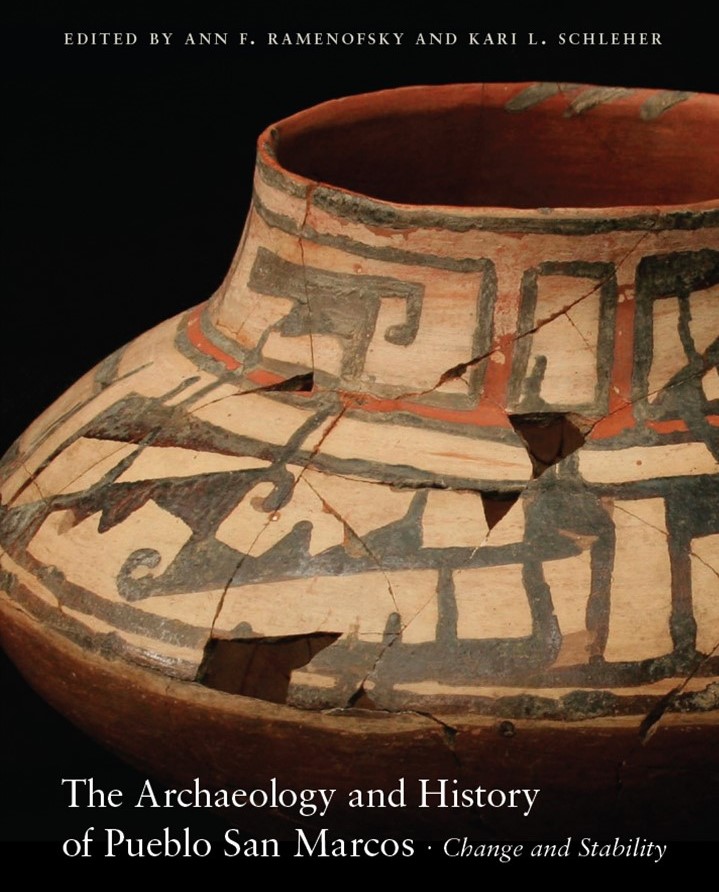

Book cover The Archaeology and History of Pueblo San Marcos: Change and Stability.
Our next few “Research Wednesday” posts will focus on San Marcos Pueblo. San Marcos is a large ancestral Pueblo town located just south of Santa Fe, New Mexico, on the edge of the Galisteo Basin. Pueblo ancestors lived in this community from approximately A.D. 1300 until the Pueblo Revolt against the Spanish in 1680. This large town had over 2,500 rooms and covered 60 acres. A Spanish mission was established in 1638. San Marcos was a thriving community, with archaeological evidence showing extensive production of beautiful, glaze-painted pottery, which they traded out across the broader Rio Grande area.
Here, we focus on the archaeological and historical research conducted at San Marcos by Dr. Ann Ramenofsky as a part of the University of New Mexico’s field schools in the late 1990s and early 2000s. These collections are housed at the Maxwell Museum and are available for future research. We published the results of this project in an edited volume, The Archaeology and History of Pueblo San Marcos, published by the University of New Mexico Press. The projects research goals were to better understand: 1) how the population changed over time, 2) how the community was organized, and 3) the nature of the Pueblo/Spanish interaction in the community.
To address these goals, a map was created of the community and artifacts were collected through surface collection. Based on consultation with descendant community members at Cochiti and Santo Domingo Pueblos, who preferred limited disturbance of this ancestral place, most of UNM’s work at San Marcos focused on the surface. A major result of this project is that surface archaeology works to address research questions with limited excavation. Over 60,000 sherds and 8,000 pieces of chipped-stone were collected from the surface and limited test excavations, yielding significant insight to the history of this important place.
By Kari Schleher & Ann Ramenofsky
Next week: In Part 2 of 4, learn more about how the community grew and changed over time.
Reference:
Ramenofsky, Ann F. and Kari L. Schleher, editors
2017 The Archaeology and History of Pueblo San Marcos: Change and Stability. The University of New Mexico Press, Albuquerque, NM.